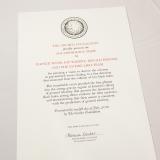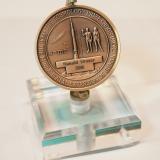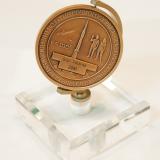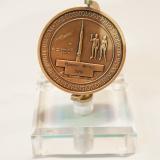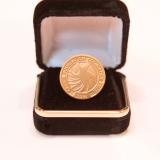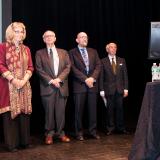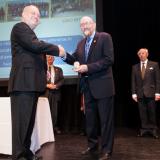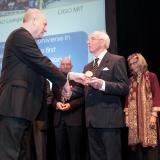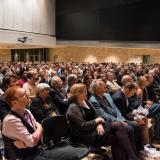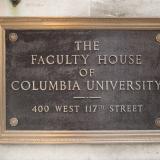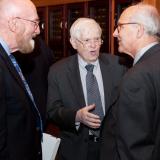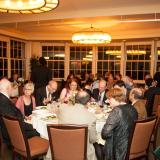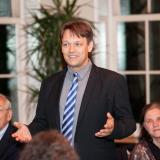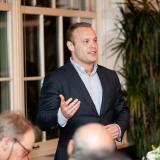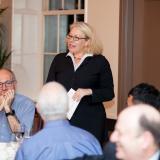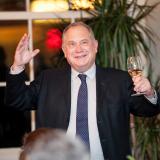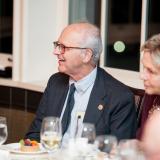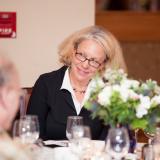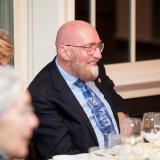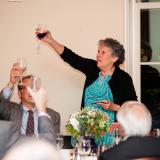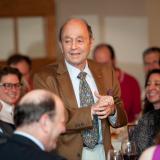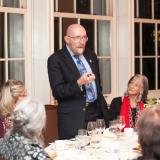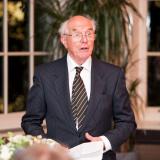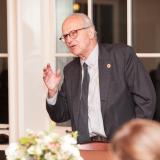2016 Gruber Cosmology Prize
The vision, persistence, and leadership of Ronald Drever, Kip Thorne, and Rainer Weiss, along with the contributions of a thousand collaborators between The LIGO Scientific Collaboration and the Virgo Collaboration, led to the first detection of gravitational waves, not only validating a key prediction of Einstein’s general theory of relativity but inaugurating a new method for studying cosmology, in particular the workings of astronomical objects exhibiting the greatest gravitational effects in the universe.
2016 Cosmology Prize Recipients
Laureate Profile
The 2016 Gruber Prize in Cosmology honors Ronald Drever, Kip Thorne, and Rainer Weiss, along with the entire Laser Interferometer Gravitational-Wave Observatory (LIGO) discovery team for the first detection of gravitational waves. That observation, which came in September 2015, not only validated a key prediction of Einstein’s general theory of relativity but provided a first foray into the strong-gravity regime of that theory—the part that covers phenomena with the strongest gravitational effects in the universe.
Drever, Thorne, and Weiss belonged to a generation of physicists who realized they could be the first to detect gravitational waves, assuming that such waves even exist. Einstein himself had thought detecting gravitational waves would be impossible, but by the 1960s, thanks to a series of technological and theoretical advances, such an experiment seemed possible, however remotely.
“Remotely” turned out to be fifty years. On September 14, 2015, LIGO registered the telltale signal of gravitational waves—in this case, the result of a collision of two black holes 1.3 billion light-years from Earth, each with the mass of 30 suns. The official announcement of the detection, on February 11, 2016, created the kind of worldwide sensation that science engenders maybe once in a generation.
The technology behind LIGO is the Laser Interferometer part of the acronym. An interferometer is a device that simultaneously sends two light signals down different paths and measures their arrival times at a common destination. The arrival times should be simultaneous as well, unless something has interfered with the two light waves during their separate journeys. At least in principle, gravitational waves could be that something. These ripples in space-time change the length of the arms and therefore the travel times for the light.
By 1972 Rainer Weiss, a physicist at MIT, had completed an in depth analysis of many of the major sources of noise that such an interferometer would encounter, and had developed a detailed design for a gravitational wave detector that would surmount those noises. This became a blueprint for two decades of R&D leading to LIGO.. During the same period the physicist Kip Thorne founded a research group at Caltech to study the theoretical side of gravitational waves. In 1975, when Thorne asked Weiss what experiment Caltech could create to complement the theoretical work, Weiss convinced him that an interferometer at a large enough scale actually had a realistic chance of detecting gravitational waves. To lead that group Thorne and Caltech in 1979 recruited Ronald Drever, a physicist from Glasgow University; Drever himself had been one of that decade’s leading creators of gravitational-wave interferometer prototypes.
In 1984 Caltech and MIT signed an agreement for the joint design and construction of LIGO, with administrative headquarters at Caltech, and with joint leadership, initially, by Drever, Weiss, and Thorne, followed by a succession of single directors.
In the 1990s, with funding from NSF in hand, LIGO Director Barry Barish expanded LIGO to include collaborators from many institutions and nations, leading ultimately to the LIGO team that made the discovery.
LIGO consists of two interferometers, in part to guard against a single false-positive detection; one instrument is in Louisiana, the other in Washington. At each location, laser light travels back and forth along two four-kilometer arms. The experiment has gone through two phases. The first was a dry run of sorts to test the fundamentals of the technology, the second has followed a significant technological upgrade. It was at the beginning of this second phase that LIGO registered the telltale difference in arrival times precisely corresponding to the disruption in space-time caused by the collision of two black holes.
Now that the LIGO team knows the experiment works, they’re confident that LIGO will detect gravitational waves emanating from other strong-gravity phenomena such as exploding stars (supernovae), spinning neutron stars (stars with a radius of about seven miles yet holding twice the mass of the Sun), even colliding neutron stars. Weiss foresees a detection rate of a few per month, maybe more. The universe, after all, is vast and violent: The new field of gravity-wave detection should have no shortage of discoveries.
Watch Video
Citation
The Gruber Foundation proudly presents the 2016 Cosmology Prize to Rainer Weiss, Kip Thorne, Ronald Drever, and the entire LIGO team for pursuing a vision to observe the universe in gravitational waves, leading to a first detection that emanated from the collision of two black holes.
This remarkable event provided the first glimpse into the strong‐gravity regime of Einstein's theory of general relativity that governs the dynamics of black holes, giving direct evidence for their existence, and demonstrating that their nature is consistent with the predictions of general relativity.






